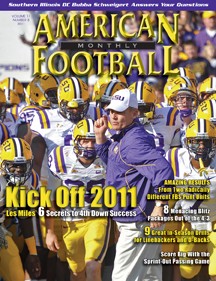Article CategoriesAFM Magazine
|
Defensive Backs: Drills to Maximize Press Man Technique – Reaction of the hands, eyes, and feet can make the difference between a big play and shutting down a WR.by: Marcus WoodsonDefensive Backs Coach Charleston Southern University © More from this issue In today’s college football, wide receivers and quarterbacks are just too good for a defensive back to sit back and play just one technique or alignment against them all game. Offensive coordinators have become very creative with the variety of passing attacks complemented by the running attacks, or vice-versa. Defenses need to bring a mixture of coverage, disguises and techniques to challenge the offense and create confusion. Most of your success will depend upon your ability to disguise your intentions so that the opponent cannot tell which alignment your coverage will be in. Stopping the run first, putting pressure on the quarterback and playing press man technique with your corners are all great ways to disrupt the timing of an offense. In order to be good at press man technique, a player must be confident but also be d....The full article can only be seen by subscribers.
|
|
|||||||
| HOME |
MAGAZINE |
SUBSCRIBE | ONLINE COLUMNISTS | COACHING VIDEOS |
Copyright 2025, AmericanFootballMonthly.com
All Rights Reserved





